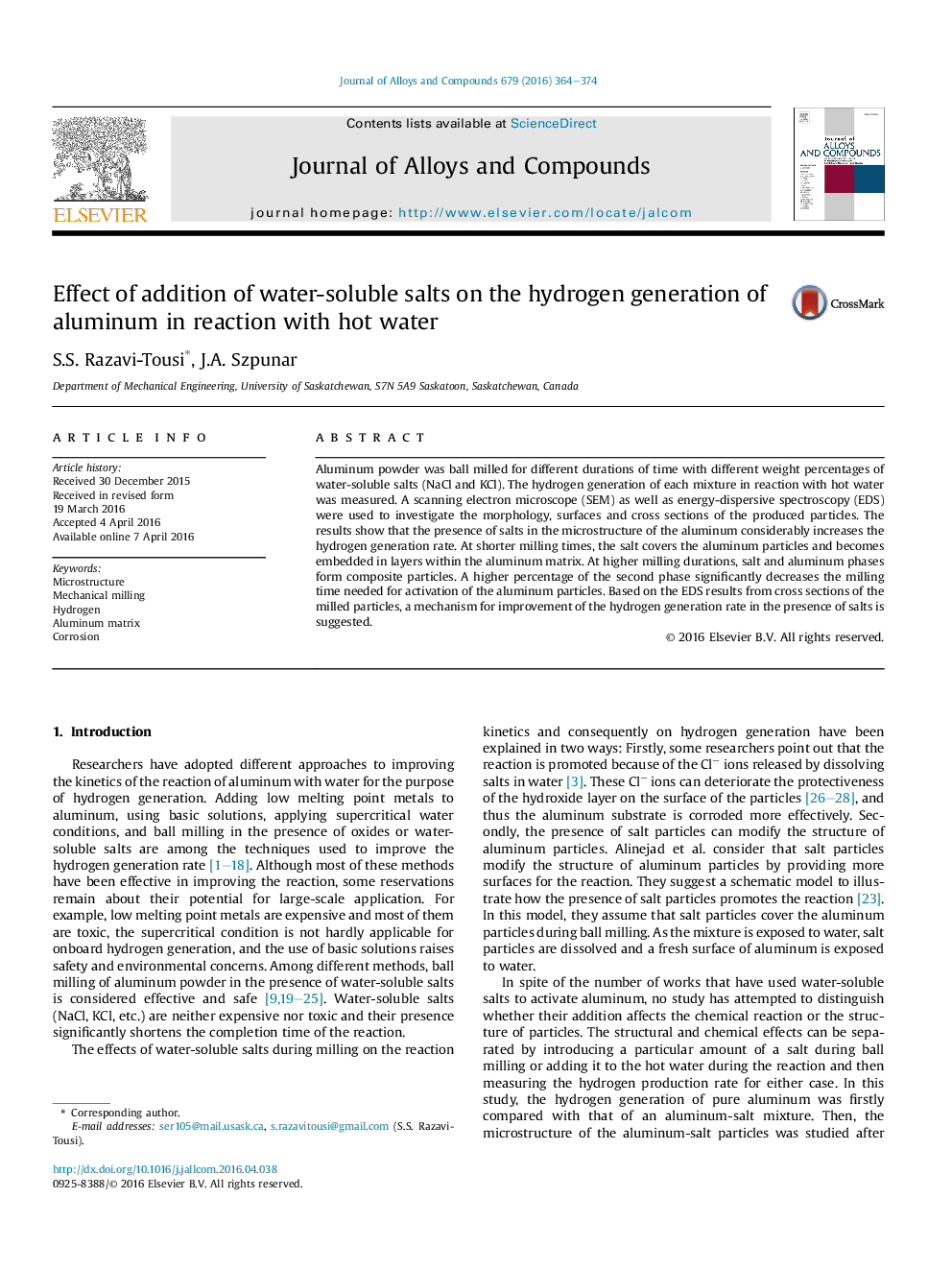| Article ID | Journal | Published Year | Pages | File Type |
|---|---|---|---|---|
| 1605676 | Journal of Alloys and Compounds | 2016 | 11 Pages |
Abstract
Aluminum powder was ball milled for different durations of time with different weight percentages of water-soluble salts (NaCl and KCl). The hydrogen generation of each mixture in reaction with hot water was measured. A scanning electron microscope (SEM) as well as energy-dispersive spectroscopy (EDS) were used to investigate the morphology, surfaces and cross sections of the produced particles. The results show that the presence of salts in the microstructure of the aluminum considerably increases the hydrogen generation rate. At shorter milling times, the salt covers the aluminum particles and becomes embedded in layers within the aluminum matrix. At higher milling durations, salt and aluminum phases form composite particles. A higher percentage of the second phase significantly decreases the milling time needed for activation of the aluminum particles. Based on the EDS results from cross sections of the milled particles, a mechanism for improvement of the hydrogen generation rate in the presence of salts is suggested.
Related Topics
Physical Sciences and Engineering
Materials Science
Metals and Alloys
Authors
S.S. Razavi-Tousi, J.A. Szpunar,
